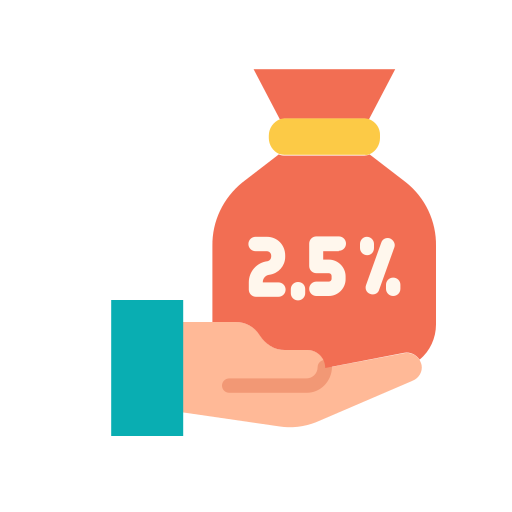Tailored Protection, Secure Future
Peace of Mind for You, Protection for Them: Life Insurance Plans!
Start your journey to a secure future today with Money Solution Life Insurance. Your peace of mind is just a step away!

Essential Attributes of Life Insurance Quick Approval Process

Swift Approval Process
Our streamlined process ensures swift approval, providing you with the coverage you need without delay.

Competitive Premium Rates
Benefit from our low premium rates, making quality life insurance coverage affordable and accessible.

Minimal Documentation Required
Enjoy a hassle-free application process with minimal paperwork, ensuring a smooth and stress-free experience.

Flexible Repayment Options
Customize your life insurance plan to suit your personal and family needs, ensuring comprehensive and manageable coverage.
Apply for a Money Solution Life Insurance in 3 Easy Steps:
- Step 1:Visit Our Website
- Step 2: Fill Out the Application
- Step 3: Submit and Get Covered





Protecting Your Tomorrow Today
Safeguard Your Future with Money Solution Life Insurance
Secure your financial well-being and protect your loved ones with comprehensive life insurance plans from Money Solution. Our policies offer peace of mind by ensuring financial stability and support when it’s needed most. With extensive coverage, affordable premiums, and reliable support, we’re here to help you build a secure future.
Comprehensive Coverage
Affordable Premiums
Reliable Support
No Co-Payments
Access medical services without any additional out-of-pocket costs, ensuring seamless healthcare coverage.
Easy Digital Access
Easily handle your policy and file claims through our intuitive online platform .
Top Security
Your data is secure with top-tier protocols, ensuring confidentiality and peace of mind for you and your loved ones.

Why Choose Us
Reasons to Choose a Life Insurance
Essential Requirements for Quick Life Insurance Approval
Essential Documents Needed for Life Insurance
Frequently Asked Questions
Life Insurance is a contract between the insurance company and the insured that the insurance company will pay a lump sum amount to the beneficiary nominated upon the death of the insured, i.e., the policyholder in exchange to a premium paid. The premium is paid either on a monthly, quarterly, half-yearly, or yearly basis.
Life Insurance Policy is a legal contract. The terms of the contract explain describe the limitations to the insured events. These excluded events limit the liability of the insurer in respect of the claims. Claims relating to suicide, to quote an example, is one of the exclusions. Others are war, riots, and natural calamities.
Insurance policies in modern times have branched out their products to retirement plans, i.e., annuities.
The important Life Insurance terms that you must know are:
Accident: This is an unexpected occurrence that causes injury or damage to the person insured
Age limit: The minimum and maximum age stipulated by the insurance company which will not entertain applications below the minimum age and above the maximum age and also will not renew the policy.
Agent: He is the mediator between the insurance company and the insurer. He sells and services the insurance contracts to the insurer. He is basically the representative of the insurance company.
Application/Proposal form: This is the initial requirement to get a policy. Normally the representative of the insurance company fills the form and the medical examiner adds the information given by the prospective policyholder. This has to be signed by the proposer or the one who is seeking the insurance policy.
Assignment: Assignment is the transfer of the interest of the policyholder to another entity. An assignment can be by way of an endorsement or by way of a separate document. The assignment can either be conditional or absolute.
Policyholder: The owner of the policy, i.e., the person who purchases the policy and pays the premium is the policyholder. The policyholder need not necessarily be the life assured.
Life assured: The person whose life is insured against the risk of untimely death is the life assured. The life assured need not be the policyholder.
Sum assured: This is the amount that the insurance company agrees to pay a sum of money on the untimely death of the insured or on any other insured event that happens. The sum assured is decided while purchasing the policy and the premium is fixed accordingly.
Policy tenure: The policy tenure is the period until which the insurance company covers the risk of death for a person. It could be for one year or for a whole lifetime. If it is for a whole lifetime then the risk is covered till the life assured is alive.
Premium: Premium is the amount you have to pay the insurance company to keep the policy active and enjoy the insurance cover. If you delay the payment of the premium beyond the grace period of 13 days, the policy will be terminated.
Premium payment mode: It is the various ways of paying the premium. You can choose to pay the premium regularly throughout the period of the policy or choose to pay only for a limited period. The option for payment for a limited period is that you need not pay the premium for the whole term of the policy but only for a limited period, i.e., maybe for 10 years, 15 years, or 20 years. The tenure of the policy may be for 20 years, but the premium will be paid only for 10 years.The next option is to pay the premium for the entire term of the policy in one single payment in a lumpsum.
Maturity age: This is the age of the person insured when the policy term ends. This will be defined when the policy is being purchased. For instance, if you’re 25 years old and opt to take the policy until the age of 65 years. The policy term will end when you attaint the age of 65 years, i.e., you will have the risk coverage for 40 years. In other words, the maximum policy tenure for a 25-year old is 40 years.
Riders: Riders are features added to the base policy. The permitted riders differ for each insurance company. The added features will attract an additional premium. The riders give a wider scope of coverage. Riders can be included at the time of initial purchase of the policy or during the renewal of the policy. The following are some of the riders:
Critical illness
Benefit on permanent disability or total disability due to an accident
Benefit on accidental death
Premium waiver
Hospital cash
Death benefit: Death benefit is the amount paid to the nominee on the untimely death of the insured during the tenure of the policy. Sum assured and the death benefit is not the same. The death benefit will be much higher than the sum assured as they include certain benefits that have been laid out in the policy like the rider benefit, etc., except in the case of term plans where there is no bonus or other added benefits.
Maturity/Survival benefit: The survival benefit is the amount paid when the life assured completes the pre-defined term mentioned in the policy whereas maturity benefit is the amount paid when the life assured lives beyond the term of the policy. However, this aspect is not found in term insurance plans.
Free-look period: This is the period within which you can choose to return the policy if you are not comfortable with the terms and conditions. The free-look period normally will be 15 to 30 days within which the policy has to be returned. The expenses incurred for medical check-up and the stamp duty charges will be deducted and the balance of the premium paid will be refunded.
Grace period: This is the period which is given to make the payment of the premium if you are not able to pay the premium on time. If the premium is paid monthly, then the grace period offered is 15 days and if it is paid yearly, then the grace period offered is 30 days. If the payment is delayed beyond the grace period, the policy will be terminated.
Surrender value: The amount that is paid if the policy is closed before the maturity date. All Life Insurance policies do not have the provision of payment of surrender value. So before purchasing a policy, you should ensure if there is the surrender value concept and what will be the amount paid.
Paid-up-value: There is an option given by the insurance company to reduce the sum assured in proportion to the premiums paid if the policyholder discontinues payment of the premium after some time. If there are any benefits associated with the sum insured, the same will be reduced in proportion to the revised sum assured. Then this policy will be termed as the reduced paid-up-value policy.
Underwriters: Underwriters are the ones who assess the risk involved in an insurance policy. The insurance policy will not be issued without the consent of the underwriters and the claim will not be settled without the consent of the underwriters. In brief, the role of the underwriters begins with the issuance of the policy and ends with the claim settlement of the policy.
Revival period: The policy will lapse if the premium is not paid beyond the grace period. However, if the policyholder intends to reactivate the policy, the same can be done within a time limit. This period offered for the reactivation of the policy is the revival period. The revival of the policy also has to be done with the consent of the underwriters.
Exclusions: There are certain risks that are not covered in the insurance policy and claims submitted against these risks will be rejected. You should look for the exclusions in the insurance plan before purchasing the policy. For instance, any damage due to riots, natural calamities, etc., may not be covered and in that case, these become the exclusions.
Nominee: Nominee is the person assigned to receive the death benefit on the death of the policyholder during the tenure of the policy. The nominee could be the wife, children, or parents. The nominee has to submit a claim for the death benefit as mentioned in the policy to avail the benefit.
Claim process: In the event of the death of the policyholder, the nominee has to place a claim request to avail the death benefit as described in the policy. Tax benefit: All the premiums paid towards the Life Insurance policies are eligible for deduction under Section 80C of the Income Tax Act 1961. The maximum benefit that can be availed is up to 1.50 Lakhs.
The following are the benefits of Life Insurance:
Cover for life: Insurance provides a life cover to the insured to the extent of the sum assured. This gives financial security for the family of the insured in case of any eventuality.
Steady investment: Life Insurance is an investment option that gives significant returns for the premiums that are paid during the tenure of the policy. Some of the insurance plans give a considerable return for your investment which will not only help you to fulfill your investment goals, but will also keep your family financially secure in case of any eventuality.
Income assured by way of annuities: Annuity plan could be the best retirement plan because you get steady income by way of annuities. This will work as a pension for persons who do not have the benefit of pension.
High returns for low cost: For the nominal premium that is paid the insurance policies fetch you very significant returns. In the case of term plans the returns could be almost 10 times the amount of premium that is paid during the term of the policy. No other instrument in the market will fetch you such high returns.
Tax benefit: You can avail a tax benefit for the premiums that are being paid towards the insurance policy under Section 80C of the Income Tax Act 1961.
Riders: Riders like critical illness, permanent disability due to an accident, hospital cash are some of the added covers that can be bought along with the base plan. For an additional premium, these covers can be bought which will eventually be of benefit if you encounter any of these events in the future.
Planning for Goals: There are certain goals you set for your life. It could be the wedding of your children, the education of your children, and so on. The nominal investments made by way of premium towards the Life Insurance policy will not only protect your family against any eventuality or loss of income but will also enable you to fulfil your goals with the significant returns that you get on the maturity of the policy.
Availability of loan: There is an option to avail loan up to the surrender value of the insurance policy. Most of the policies offer this benefit. So, in case of emergency, you can avail a loan to the extent of 95% or the surrender value from any bank/financial institution. The surrender value of the policy can be obtained from your service provider.
Before deciding on the best Life Insurance plan, you should understand some basic steps that will lead you to make the right decision.
Need-based policy: The policy should be need-based. It means you should assess the number of dependants in your family, the source of income, and the monthly commitments before you decide on the Life Insurance policy. You should also draw a list of goals that you have set for yourself like education of your children, marriage of your children, retirement plans, buying a dream house, etc., and plan the investment accordingly.
Seek the help of an advisor: There are insurance advisors who can help you with your decision. They will consider all the angles like the source of income, monthly expenditure as per your lifestyle, the number of dependents, your assets and liabilities, etc., and will arrive at a sum assured. They will be able to advise you on which plan to choose. They will help you choose the plan that would give you optimum returns for your investment. The plans could be a term plan, unit-linked plan, endowment plan, or a combination of the plans. So, it is necessary to seek the advice of these insurance advisors if you are confused about the best plan for you.
Compare products: There are a lot of players in the market giving various benefits with varied premium levels. Compare the products and choose the one that would give you optimum benefit for the least investment.
The comparison between Term Life and Whole Life Insurance is given below for you to choose which will suit you better.
Suitable for persons who want only protection for a pre-defined period.
Only death benefit is available and no maturity benefit.
Provision for riders like critical illness, permanent disability due to an accident, hospital cash etc., is available.
Offers protection to dependants against debts.
High returns for low investment
Premium need not be paid until the maturity of the policy. Premium has to be paid only for a limited term as per the stipulation in the contract.
Suitable for persons who want both protection as well as maturity benefit.
Ideal for persons who are planning for a future corpus.
The cover is available for a lifetime that is until the insured is alive.
The policyholder can surrender the policy if he/she wishes to discontinue and obtain a lumpsum by way of the surrender value of the policy.
There is no provision for riders in this policy.
The dependants can only get a death benefit but no protection against debts.
Both, the death benefit and maturity benefit are provided.
Premium has to be paid for a premium payment term. Premium is much higher than when compared to the premium of the term plan.
An option to avail a loan when in need of funds is available.
If you have decided what you are expecting out of an investment in the Life Insurance policy, you can study the difference and decide on the best policy for you.
The different types of Life Insurance Policy are:
Term Insurance:
In a Term Insurance, there is risk cover and no maturity benefits. There is a risk cover for a defined period. There is only death benefit and no maturity benefit under this policy. That means, in case of any eventuality, the dependants will get a lump sum amount. But if the policyholder outlives the policy term, then there is no benefit.
If you are seeking only protection for your dependants, then this policy is recommended since it gives high returns for low investment. There is a provision for riders like critical illness, permanent disability due to an accident, hospital cash, etc. which will give a wider cover.
There is an option for the payment of death benefit either in one lump sum or as monthly pay-outs or as a combination of both.
Unit-Linked Plans
The premium paid towards this plan will be partly used for insurance cover and partly for investment. The investment will be done either in bonds, equities, debts, hybrid funds or market funds. You can opt for the investment as per the level of risk you can accept.
Endowment Plan
Endowment Plan is a traditional plan. The premium paid is partly used for risk cover and partly invested in the capital market by the Life Insurance Company. Periodical bonus will be paid which will either be paid along with the maturity amount or paid along with the death benefit to the nominee. Both maturity benefit and death benefit are available in the plan.
Though the investment component exists, the risk involved is much lower than in other investment products.
Money-back Plan
This is a plan wherein a percentage of the sum assured is paid to the policyholder at periodical intervals as a survival benefit. This plan is entitled to the bonuses declared by the Company from time to time and is an ideal plan to meet short-term financial goals.
Whole Life Insurance
This is a policy wherein cover is available until the insured is alive and sometimes even up to 100 years. The death benefit is available for this plan. If the insured lives beyond 100 years the maturity amount along with the bonus will be paid to the insured.
There is an option to make partial withdrawals after completion of the premium payment term. The premium is much higher when compared to the term plan.
Child Plan
This plan is beneficial to build a corpus fund for your children for future requirements like education or marriage. There is a provision for payment of annual payments or a lump sum payment on attaining the age of 18 years. If during the policy term the parent expires, then some of the companies will waive further premiums and the policy will be active till the maturity date.
Retirement Plan
This plan will give you financial strength on retirement. You can be independent financially and live peacefully after retirement. A lump sum amount will be paid on attaining the age of 60 years or can also be by way of annual instalments.
In the event of the death of the insured, the nominee will be paid the death benefit which will be much higher than the coverage value or fund value. It could be 105% more than the total premium paid. If the insured outlives the policy term, then the fund value will be paid which can be used for an annuity.
The following are the top Life Insurance Companies in India:
Life Insurance Corporation of India
ICICI Prudential Life Insurance
SBI Life Insurance
Aditya Birla Life Insurance
Bajaj Allianz Life Insurance
Max Life Insurance
Reliance Life Insurance
HDFC Standard Life Insurance
Birla Sun Life Insurance
The maturity benefits of term insurance are not like a traditional Life Insurance plan where the sum assured is paid out along with accrued bonuses is paid on the maturity of the policy to the policyholder.
Term insurance has only a death benefit wherein the sum assured is paid to the nominee on the untimely death of the policyholder. If the policyholder desires maturity benefit, then they have to go for TROP plan, i.e., Term Return of Premium. Under this plan, if the policyholder lives beyond the period of the policy, the premiums paid on the policy will be returned. But even in this plan the maturity benefit, i.e., the sum assured will not be paid to the policyholder. Only the total premium paid during the term of the policy will be paid.
Now you can purchase an insurance policy online which can be done at the comfort of your home or office.
There are two ways of purchasing the policy online. If you have decided the insurance company from whom you intend to purchase the policy from, you can visit the official website of the insurance company and apply for the policy. The other way is to visit the website of any insurance aggregator wherein you will have the advantage of comparing the offers of various insurance companies in respect of factors like premium, additional benefits, claim settlement ratio. You will have the advantage of weighing the pros and cons of each insurance company before coming to a conclusion.
Once the decision is made you should follow some simple steps to apply for the policy online:
Log in to the official website of the insurance company
Provide the basic details like name, contact number, income, the habit of smoking and the expected life cover.
On providing the life cover, Life Insurance plans with full details about the benefits and features will be displayed.
You can choose the policy that suits your requirement and click on the suggestion option
The next step will be paying the premium. The premium can be paid through the payment options available.
After the payment is done a basic form has to be filled. You will have to provide all the personal details, details of existing coverif any, health details, life-style details and the details of the nominee. All the details provided should be accurate.
After the form is filled documents like address proof, identity proof and health certificates have to be provided.
A list of documents to be uploaded will appear while filling the form
Most of the insurance companies have made a medical check-up of the policy seeker mandatory
In such cases, the test reports have to be uploaded. If the insurance companies suggest a specific medical centre for health check-up, the reports will be directly sent to the insurance company by the centre.
Once the application form, relevant documents, and test reports are received by the insurance company, the same will be verified and if the company approves the proposal then the same will be communicated to you along with the policy document.
The payment of premium for Life Insurance can be made by the following ways:
By cheque or draft
Through NEFT/RTGS
Online through the official website of the Insurance company
Through the Bill Desk of the Insurance Company
You have to check for details of premiums to be paid, lock- in period, revival policy, premium default implications, charges to be paid, terms of the policy, and guaranteed benefits before purchasing an insurance policy.
The disclosures made in the proposal are crucial since any wrong disclosure could be a reason for declining the claim.
There is an option given by the insurance company to reduce the sum assured in proportion to the premiums paid if the policyholder discontinues payment of the premium after some time. If there are any benefits associated with the sum insured, the same will be reduced in proportion to the revised sum assured. Then this policy will be termed as the reduced paid-up-value policy.
Paid- up value = Nos of premiums paid/Nos of premiums payable x Sum Assured






